'Class A' 3-cylinder compound 0-8-0 No 1867
I first saw a photograph of a Class A compound in 1952 and decided immediately that, one day, I would build a model of one. I finally achieved that ambition 50 years later!
The first Class A was built at Crewe in 1893 and the following year comparative trials were held between it and the 2-cylinder simple No 2524 to establish which engine was the more economical. The Class A won and a further 110 were built by 1900. Webb must have concluded that the savings in coal and water costs arising from running these compounds more than offset any increase in the cost of maintenance. Whale may not have had the same view because, between 1906 and 1912, he converted all of the Class A locos to 2- cylinder simples of Classes C, C1 and D. Class C was identical to No 2524 except that they had no combustion chamber in the boiler.
Fortunately for me, by the time I decided to build a model of a Class A, London Road Models had introduced their kit for the Class C/C1. All I had to do was retrofit it with a three-cylinder front end. That proved something of a headache as the outside cylinders are incorporated within the curvaceous smokebox. I could, it seemed, attach the smokebox to either the loco body or to the frames but both alternatives created major difficulties. Eventually I hit on the idea of making the smokebox and everything in front of it part of the body, but attaching the cylinders to the frames. The cylinders would be a push fit into the hollow smokebox, and that is how it ended up.
The smokebox wrapper is a complicated piece of fabrication. From the top it starts off with vertical sides but the cylinders are inclined at a rake of 1 in 8.5 and, furthermore, their centreline is forward of the smokebox. I cut out two plates to form the outer and inner faces of the smokebox, the inner being deeper than the outer, and attached these to the smokebox. This provided a former around which I could form the wrapper, which I made in two halves, an upper and a lower half. The upper half consisted of the wrapper that came with the kit and the lower half was a spare wrapper from my spares box. Where they met I formed a soldered butt joint which is more visible than I would have liked but then, as Osgood Fielding III remarked: "Nobody's perfect". It then just remained to remove enough of the lower section of the smokebox rear plate to allow the chassis and cylinders to slide in and out.
The model is powered by the usual LH21 driving the third axle via an underhung gearbox. The centre two axles are rigid and the outer two are sprung. Pickup is from all eight wheels.
The loco weighs 263grms and exerts a pull of 55grms.
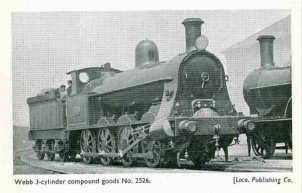

The picture that inspired
me, in 1952, to build a model of a Class A
LNWR Society collection
The model that I built 50 years later!
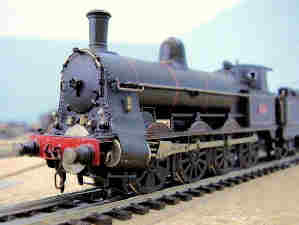
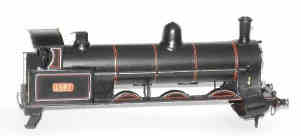
The other side
The combined body and cylinder wrapper
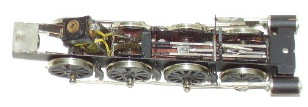
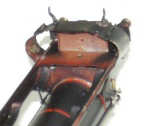
Top view of the chassis showing some imitation valve gear
The cylinder wrapper showing the hole into which the cylinders slide